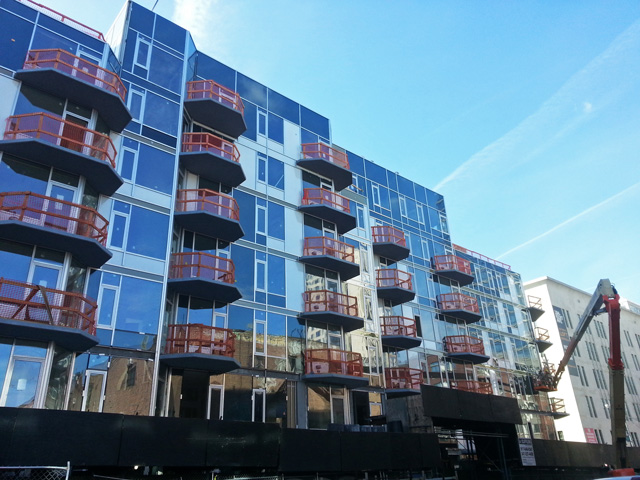Greetings, commies and lovers of
beautiful architecture! Today I am pleased to feature an interview with my
aunt, Elena Kalman,
an accomplished architect, whose career started in Moscow. Her portfolio
spans an impressive collection of residential, commercial and religious
buildings. In today's interview she talks about maintaining a philosophical
perspective on her creations and not getting too attached to them.
MJN: I love your house in North Stamford. You use it as a
portfolio piece - and for a good reason. I sense Japanese influences - stone,
glass, open space. It's ideal for sophisticated, high-achieving empty-nesters.
As an architect, do you also have to be an interior designer?
EK: Thank you, I am glad you like my home. The house where I
live and have my office is one of the simplest and least expensive structures I
have designed. My husband and I feel comfortable there. In terms of
Interiors: Yes, the architect, if she wants to have creative control, has to be
able to design the interiors. Otherwise, the building would have a split
personality.
MJN: You have hosted comedians and performers at your house.
Indeed, it has plenty of open space that can be used for performances. I'm sure
you've taken the acoustics into consideration. I am a little nostalgic for the
days when every aristocratic family had a "salon" space at home,
where musicians and poets would showcase their talents.
EK: I do not have a "salon". It is a little too
pretentious for my taste. I just had some interesting people, whom I knew, give
on occasion an impromptu performance or a lecture, while passing through our
town. In terms of acoustics: in a large theater you need to really have a
specialist do the sound reflection and absorption calculations. In a relatively
small space, like a house living room, if you have some reflective surfaces
(glass in my case) and some absorptive surfaces (sofas and people), the sound
should be o.k.
MJN: I love telling my Jewish friends that you were the one who
designed the Chabad building in Stamford. I drive by it every day on my way to
work. Do most people who go to Chabad in Stamford know that you are the architect?
Do you think it helps to belong to a particular religion if you are designing
houses of worship?
EK: I do not think the designer has to belong to the same
religion as the congregation. In addition to several the Jewish temples, I
worked on the Unitarian Church in Stamford and, in my youth did all the
drawings for the former catholic Cathedral in Kamenetz Podolsky. I think all
the houses of worship have a lot of spiritual energy and it is always inspiring
to work on them.
MJN: One of my acquaintances, who is also an architect,
expressed a great deal of sadness over the fact that the building she had
worked on had been neglected. It's hard to see your architectural
"baby" neglected. How do you separate yourself emotionally from your
work once it's done?
EK: I would like to have my work properly maintained, but when
the project is completed it is out of my hands. Religious organizations are
notoriously bad with funding. Especially, it is true of Chabad. They do not
charge a membership fee, as to make sure anyone feels welcome. They encourage
donations, but these are unreliable. Anyway, there is no point of falling in
love with your own work.
MJN: Is there a project you are fantasizing about completing
that is currently out of your reach due to financial constraints? Do you have a
dream building that would not be practical or commercial enough but would take
a lot of money to build?
EK: Not really. I do not do fantasy architecture. I like the
constraints of reality and each project that comes with its own constraints is
a welcome challenge. Expensive materials do not necessarily lead to good
architecture - just look at Mac-mansions in Greenwich and New Canaan. I do not
ever want to work on any of these. It helps to have some financial freedom, but
even more importantly, it is great to have a client who allows me to have
creative freedom.

No comments:
Post a Comment